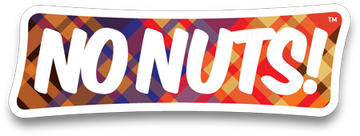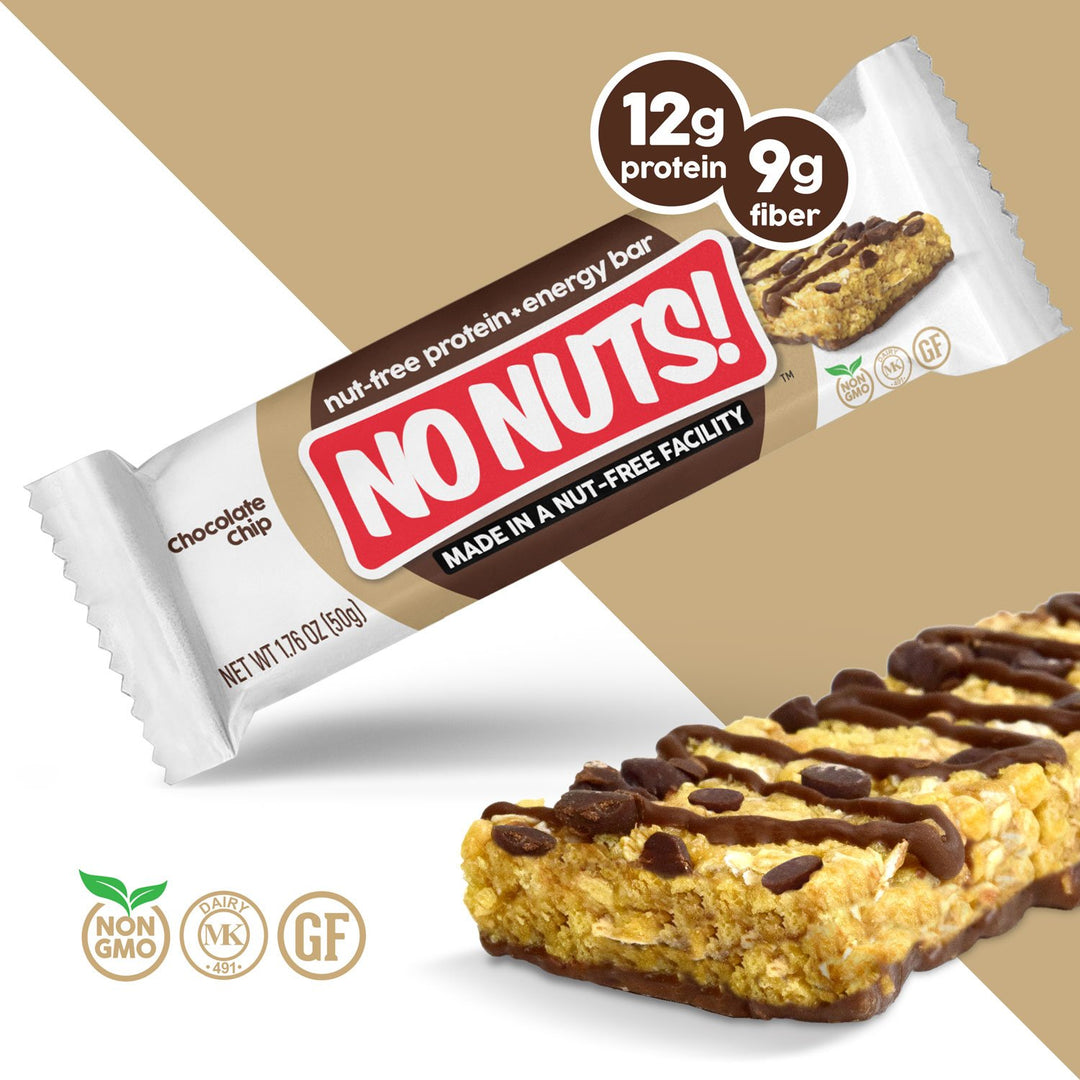12 Essential Tips to Master Allergy-Friendly Food Labels
Apr 14, 2025
Living with food allergies can be tough, but knowing how to read allergy-friendly food labels is super important. It can make your life a lot easier and safer. At Go No Nuts, we make safe, yummy snacks for people with nut allergies. We think it's really important for you to know how to read food labels so you can make good choices and stay safe. Let's look at 12 key tips to help you understand food labels better. This way, you can eat different foods without worrying too much.
Key Takeaways
- Know the nine major allergens that must be clearly labeled in the US
- Always read the whole ingredients list, even for foods you know
- Look for clear allergen statements and understand warning labels
- Be careful about cross-contamination risks and ingredient changes
- Know about labeling laws and choose trusted allergy-friendly brands
- Make an allergy action plan and teach others about food allergies
1. Know the Major Allergens
First, you need to know about the main food allergens. In the US, there are nine big ones that must be clearly labeled on packaged foods. These are milk, eggs, fish, shellfish, tree nuts, peanuts, wheat, soybeans, and sesame. It's important to know these allergens and their different names. For example, casein is a milk protein, and lecithin can come from soy. Our No Nuts Chocolate Chip bars don't have any of these allergens, so they're safe for many people with food allergies.
2. Read the Ingredients List Carefully
Always read the whole ingredients list, even for foods you've bought before. Companies can change recipes without telling you. Ingredients are listed from most to least. Be extra careful about ingredients at the end of the list. They might include things that could have allergens. Look for clear, simple language about allergens. Our No Nuts Caramel Mocha bars list all ingredients clearly, so you can easily see what's in them.
3. Look for Clear Allergen Statements
Many products, including all Go No Nuts snacks, have a clear "Contains" statement near the ingredients list. This quickly tells you if any major allergens are in the product. It's the law for companies to clearly show if any of the nine major allergens are present. Our No Nuts Lemon Creme bars clearly say they're free from nuts, gluten, and dairy. This helps you make quick, safe decisions. Even if there's no "Contains" statement, always check the ingredients list to be sure.
4. Understand Warning Labels
Some products say things like "May contain" or "Processed in a facility that also processes." These are warnings about possible cross-contamination. Companies use these to tell you about potential allergen risks from shared manufacturing. It's important to know that different companies use these warnings differently. At Go No Nuts, we make all our snacks in a place that doesn't have any nuts. This means we can be sure our products don't have nut contamination, making them extra safe for people with nut allergies.
Types of Precautionary Allergen Labels
- May contain [allergen]
- Processed in a facility that also processes [allergen]
- Made on shared equipment with [allergen]
- Manufactured in a facility that also uses [allergen]
5. Be Aware of Ingredient Changes
Companies can change their recipes anytime. They might do this to make food cheaper, taste better, or because they can't get certain ingredients. That's why it's important to check labels every time you buy something, even if you've bought it before and think it's safe. These changes might add new allergens or increase the risk of cross-contamination. At Go No Nuts, we always tell our customers if we change our recipes or how we make our products. We try to keep using the same safe ingredients in our products. But we still think it's a good idea for you to always check labels, just to be extra safe.
6. Understand Cross-Contamination Risks
Cross-contamination can happen when allergens are present in the same place where food is made. This can happen through shared equipment, tiny bits of food in the air, or human mistakes. Even a tiny amount of an allergen can cause big problems for some people. That's why we make all our snacks, like our No Nuts Blueberry Vanilla bars, in a place that doesn't have any nuts. We use separate equipment, clean everything really well, and test our products often to make sure they don't have any nuts in them. When you're reading labels, look for statements about shared facilities or equipment, as these can mean there's a higher risk of cross-contamination.
7. Look for Certification Logos
Some products have special logos from organizations that check if they're really allergen-free. These checks involve a lot of testing to make sure products meet specific standards for allergen control. Not all allergen-free products have these certifications, but they can make you feel extra sure about what you're eating. Some common certifications are "Certified Gluten-Free," "Certified Peanut-Free," or "Certified Allergen-Friendly." Our Go No Nuts products are certified allergen-friendly, which means you can trust them. But remember, certification requirements can be different, so it's still important to read labels carefully even on certified products.
8. Contact Manufacturers When in Doubt
If you're not sure about a product's ingredients or how it's made, don't be afraid to ask the company. Most food companies have people you can call or email to ask about allergens. They can give you more information about how they control allergens, risks of cross-contamination, or explain confusing label information. At Go No Nuts, we're always happy to answer questions about our No Nuts Protein Snack Bar Variety Pack or any of our other products. We want to help you make safe food choices. Remember, it's better to ask and be sure than to risk having an allergic reaction.
9. Stay Informed About Labeling Laws
Food labeling laws can change as we learn new things about allergies. For example, sesame was recently added as the ninth major allergen that needs clear labeling in the U.S. This change started in January 2023 because more people are allergic to sesame now. It's good to know about these changes to better protect yourself or someone you know with allergies. You can follow allergy organizations, sign up for FDA updates, or join allergy support groups to stay up-to-date on labeling laws and best practices. Knowing these rules can help you speak up for yourself and make better choices when buying food.
Timeline of Major U.S. Food Allergen Labeling Laws
Key Points
- In 2004, the Food Allergen Labeling and Consumer Protection Act (FALCPA) was introduced, covering 8 major allergens.
- FALCPA was implemented in 2006, requiring clear labeling of major allergens on food packages.
- In 2013, standards for gluten-free labeling were established.
- The FASTER Act of 2021 added sesame as the 9th major allergen.
- As of 2023, sesame labeling is now required on food packages.
10. Educate Others About Food Allergies
Teaching others about food allergies can help make things safer for everyone. Share what you know with friends, family, and schools to help them understand and care more about people with food allergies. This can make social situations easier and help people be more careful when preparing food. Our blog post on managing nut allergies in kids is a great thing to share. It gives useful tips for dealing with school and social situations, which can be really hard for kids with food allergies. By teaching others, you're not just helping yourself or people you know, but you're also making things better for everyone with food allergies.
11. Create an Allergy Action Plan
Having a clear plan for what to do if you have an allergic reaction is really important. This plan should include which foods to avoid, what symptoms to watch for, and who to contact in an emergency. It should also say what to do if you eat something you're allergic to, including how to use emergency medicine like epinephrine auto-injectors. Share this plan with family, friends, teachers, and anyone who takes care of you so everyone knows what to do in an emergency. Include safe snacks like our Cinnamon Roll Snack Bars in your plan for worry-free eating. Having a list of safe foods ready can make it easier to choose what to eat in different situations, like school lunches or when you're traveling.
12. Choose Trusted Allergy-Friendly Brands
Stick with brands that are really careful about making allergen-free food and labeling it clearly. These brands often have special places or ways of making food to avoid cross-contamination. They're usually more open about their ingredients and how they make their food. At Go No Nuts, all our products, including our popular No Nuts Chocolate Chip Energy Bars, are made in a place that doesn't have any nuts and are clearly labeled for your safety. We know how important it is to trust your food when you have allergies, so we're very careful about how we make our products. By choosing brands you trust, you don't have to worry as much about reading labels all the time and can enjoy your food more.
Conclusion
Understanding allergy-friendly food labels is really important if you have food allergies. It helps you make safer choices about what you eat, which can make your life better and less stressful. By following these 12 tips, you can feel more confident about reading food labels. Remember, at Go No Nuts, we work hard to make tasty, nut-free snacks that you can enjoy without worrying. We're very careful about how we make our snacks and how we label them, so you can focus on enjoying them instead of worrying if they're safe. Check out our nut-free snacks and snack safely!
For more info on dealing with food allergies, take a look at our blog post about helping kids with food allergies. This guide has lots of useful advice for parents dealing with their children's food allergies, covering things like nutrition and social situations. Stay informed, stay safe, and enjoy your food without worrying! Remember, having food allergies doesn't mean you can't eat tasty and healthy food. With the right knowledge and trusted products, you can eat a variety of delicious and safe foods.










